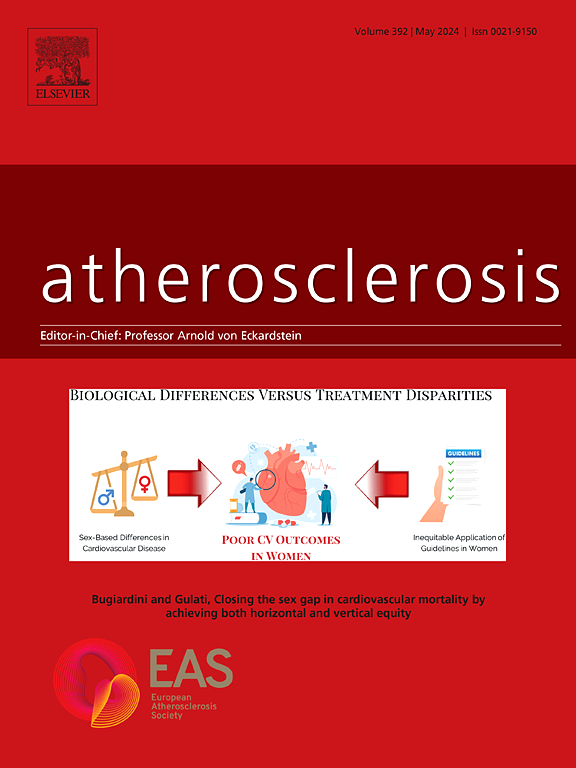The impact of sex and the cheese matrix on cholesterol metabolism in middle-aged adults
IF 4.9
2区 医学
Q1 CARDIAC & CARDIOVASCULAR SYSTEMS
引用次数: 0
Abstract
Background and aims
Cheese has been shown to lower total and LDL cholesterol concentrations, despite being a source of saturated fat. The dairy matrix is purported to be responsible for this effect. There is increasing recognition of sexual dimorphism in the development and progression of cardiovascular disease (CVD), in addition to sex-related differences in response to nutrition interventions. This analysis aims to explore the effect of sex on the cholesterol-lowering effect of cheese compared to butter.
Methods
The present study is secondary analysis of pooled data from two parallel-arm randomised controlled trials (RCT) with similar protocols, where participants (n 197, 41.6 % male) received either 120g cheese (n 104) or deconstructed cheese (49g butter, 30g calcium caseinate and a calcium supplement, n 93) for 6 weeks. Each arm provided ∼40g fat per day.
Results
In the group as a whole, cheese was found to lower total and LDL cholesterol, compared to deconstructed cheese. No sex × treatment interactions were observed although, within-sex analysis found men and women to respond differently. Within males, cholesterol concentrations decreased in response to dairy fat. Within the female group cheese lowered total and LDL cholesterol concentrations, whereas deconstructed cheese was found to increase the same lipid markers.
Conclusions
Cheese was found to lower cholesterol concentrations in the cohort as a whole, while men and women were found to respond differently to dairy fat. Females appear to respond more favourably to cheese compared to deconstructed cheese. These findings indicate the cheese matrix may have a stronger effect in females and thus may play a role in personalised nutrition.

求助全文
约1分钟内获得全文
求助全文
来源期刊

Atherosclerosis
医学-外周血管病
CiteScore
9.80
自引率
3.80%
发文量
1269
审稿时长
36 days
期刊介绍:
Atherosclerosis has an open access mirror journal Atherosclerosis: X, sharing the same aims and scope, editorial team, submission system and rigorous peer review.
Atherosclerosis brings together, from all sources, papers concerned with investigation on atherosclerosis, its risk factors and clinical manifestations. Atherosclerosis covers basic and translational, clinical and population research approaches to arterial and vascular biology and disease, as well as their risk factors including: disturbances of lipid and lipoprotein metabolism, diabetes and hypertension, thrombosis, and inflammation. The Editors are interested in original or review papers dealing with the pathogenesis, environmental, genetic and epigenetic basis, diagnosis or treatment of atherosclerosis and related diseases as well as their risk factors.
 求助内容:
求助内容: 应助结果提醒方式:
应助结果提醒方式:


